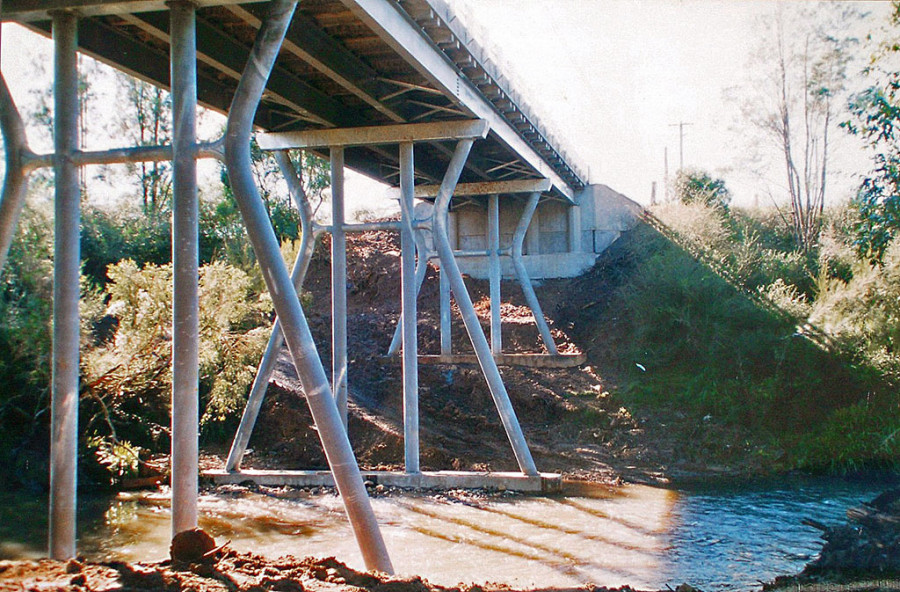The tall tubular bent columns for this bridge were inspired by the principles of tubular steel furniture applied to large steel pipes using induction bending techniques developed for pipework for the water, oil and gas industry.
Sloped columns provide triangulation thus eliminated most of the ugly and costly crossbracing that would have been necessary for straight columns. The back to back “K” columns are connected by the horizontal struts with hidden joints. This enabled each “K” to be less than 2.5 metres wide, small enough to be hot dip galvanized, and convenient for transport and handling.
Surmounting the columns is a galvanized steel crosshead. This was originally designed as a thick wall hollow box section, later changed to a concrete-filled thin wall design. This greatly reduced the amount of steel and eliminated the need for internal ribs and stiffeners. As well as reducing the cost the lightweight construction simplified the task of lifting the components into position.
“Tensar” reinforced earth construction was used for the abutments in conjunction with precast concrete walls.
Fortunately, the original timber piles, in place for nearly100 years, were found to be sound below water level. Nevertheless additional steel piles were driven to increase load capacity, thus enabling an increase in deck width from single to double lane. Following shallow excavation, a prefabricated “box” was assembled around each pile group. The box comprised a pair of parallel reinforced precast concrete walls joined by steel struts, with curved steel shutters forming the ends. Heavy steel reinforcement bars were tied in place to starter bars protruding inwards from the precast walls. The entire assembly was carefully positioned and levelled, to ensure accurate location of templates suspending the hold-down bolts for the column bases. Finally the concrete was poured to form the pile cap.

